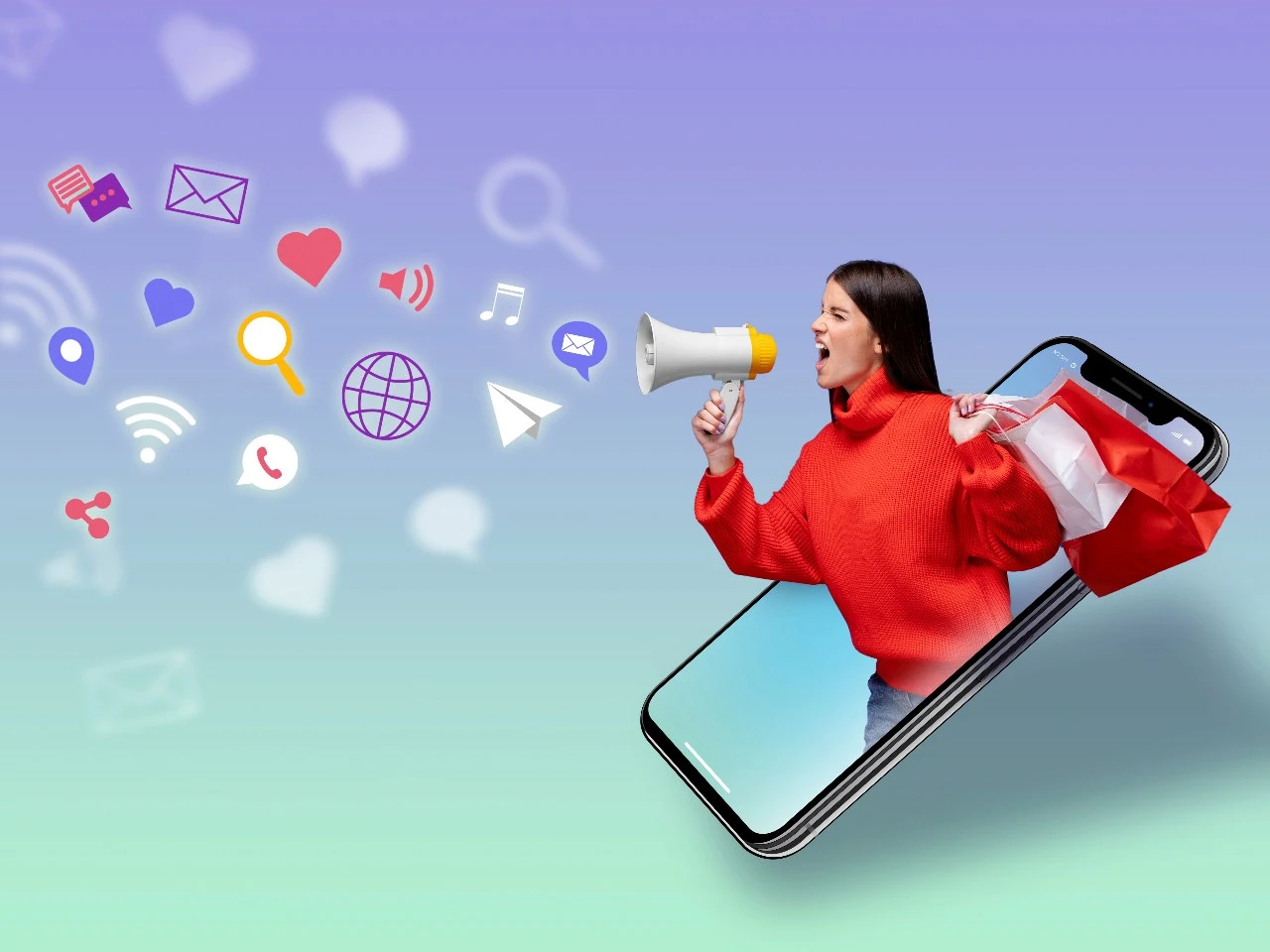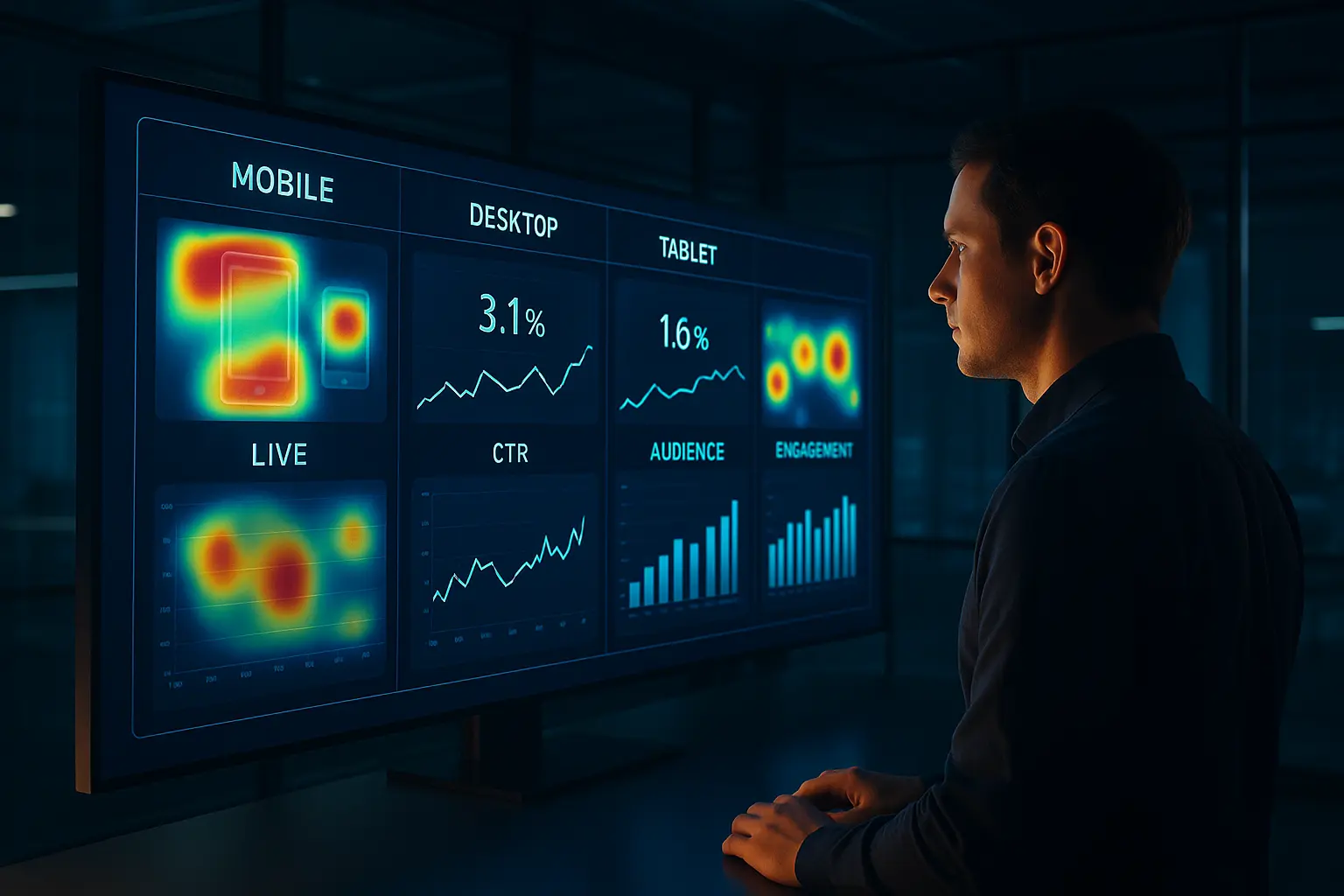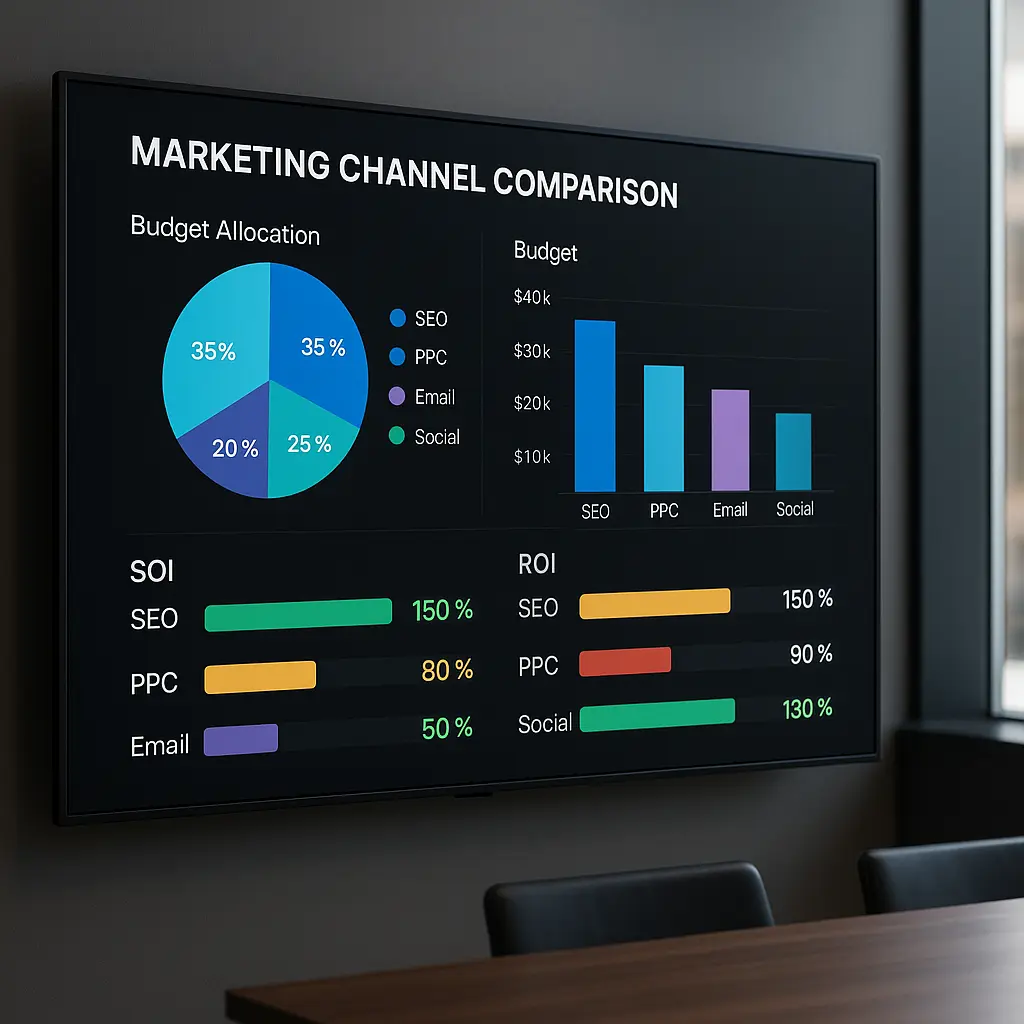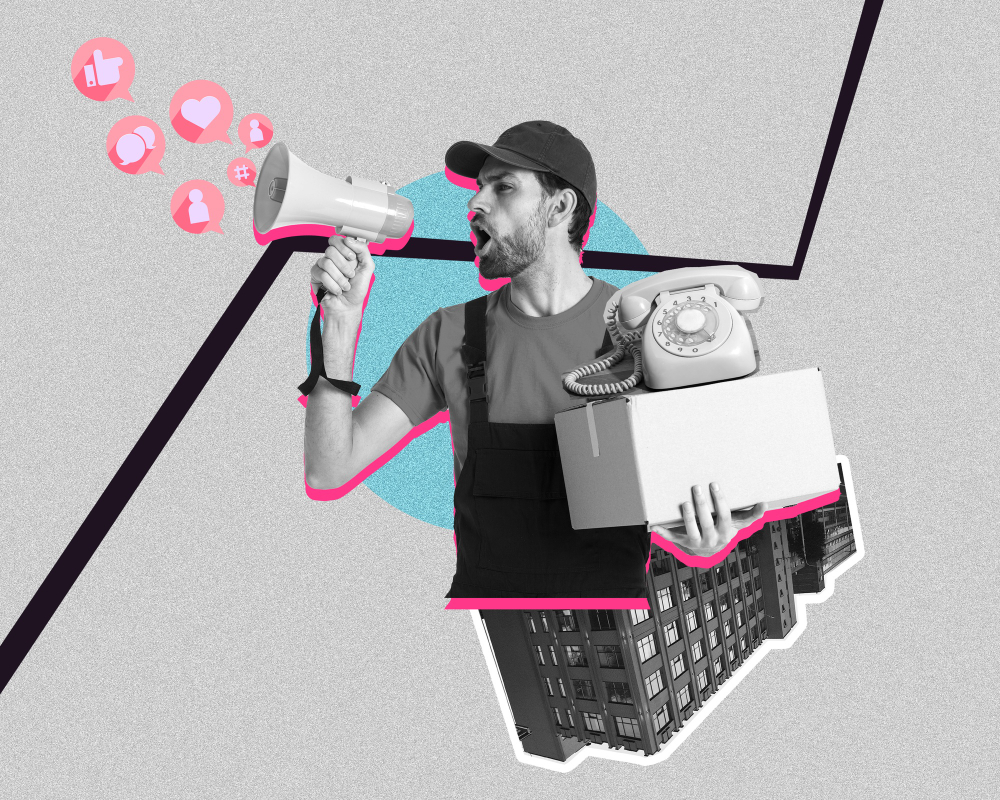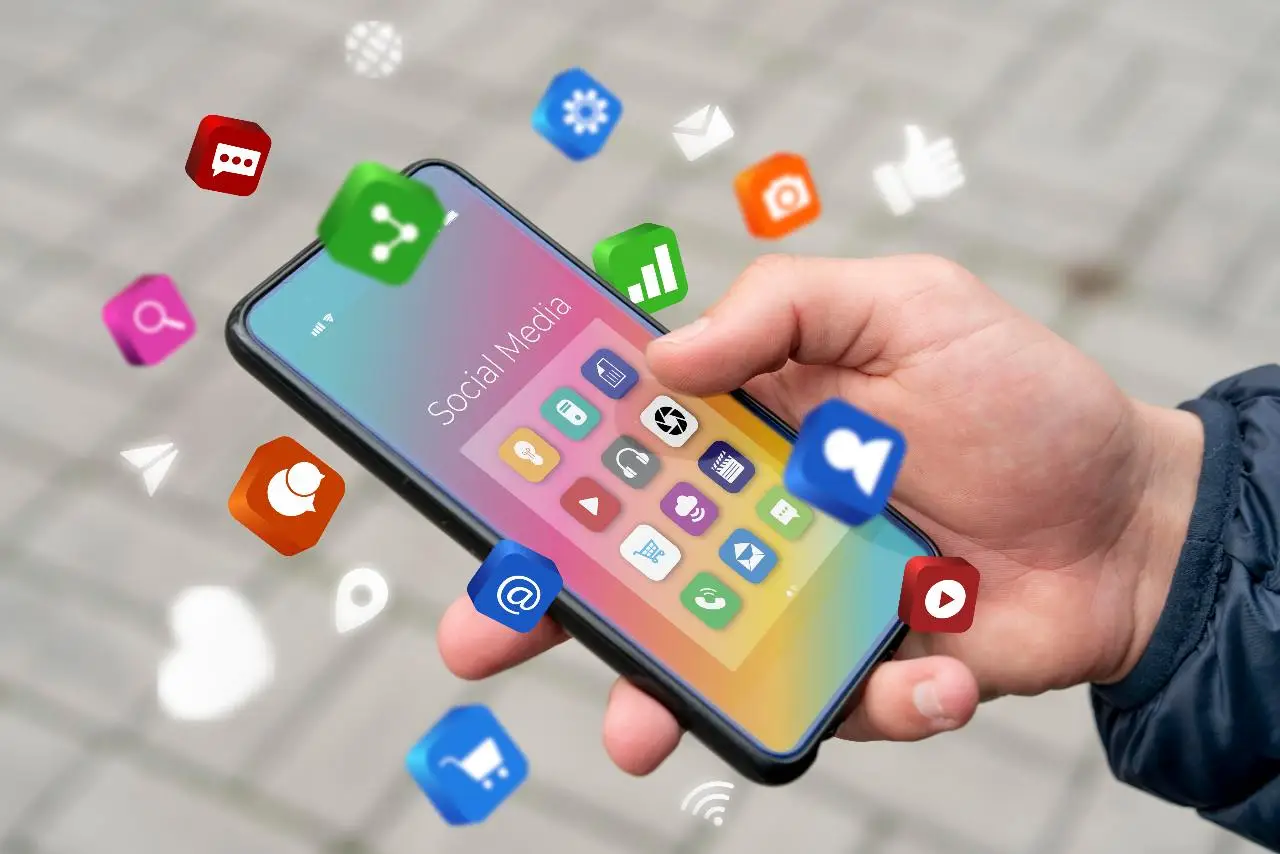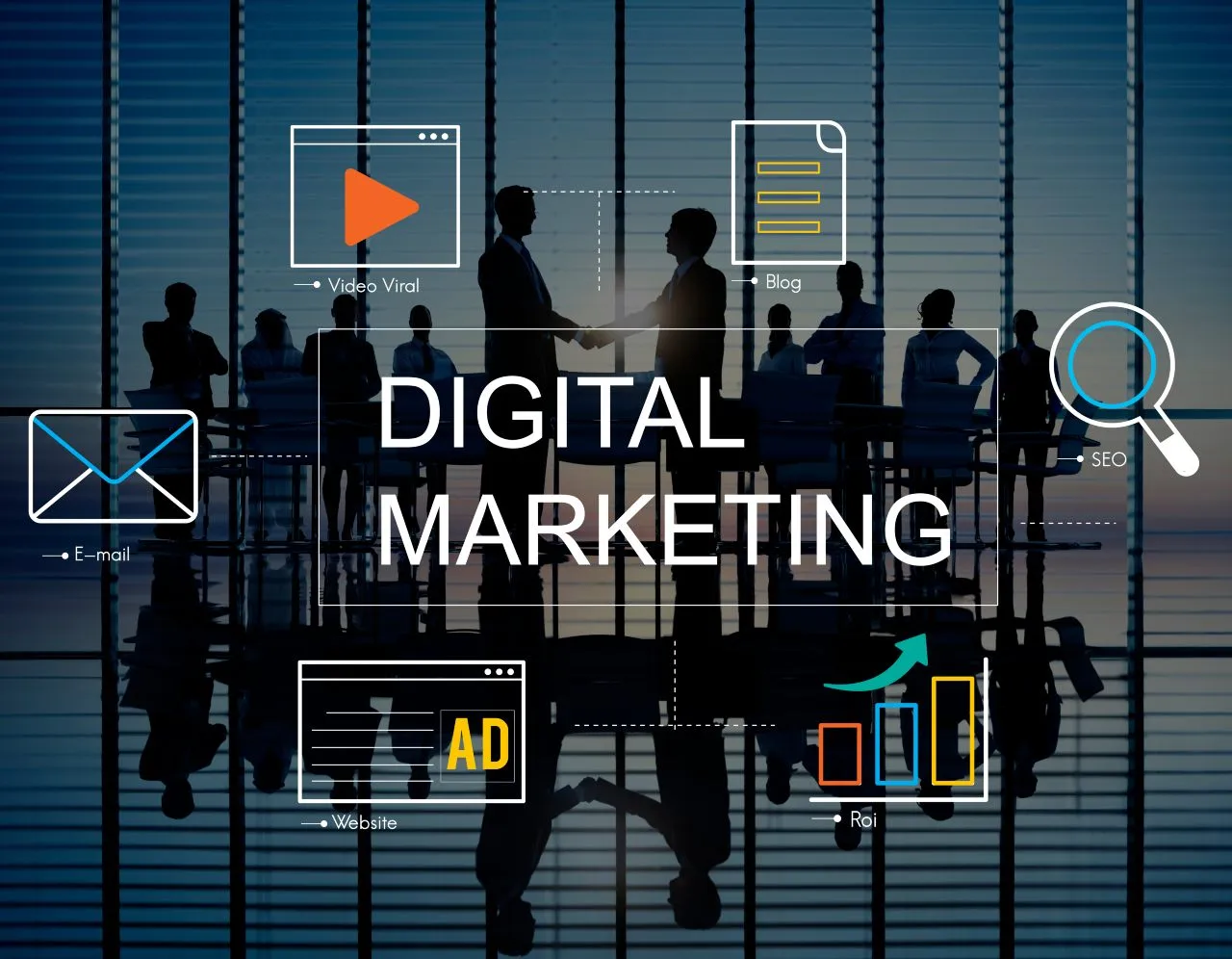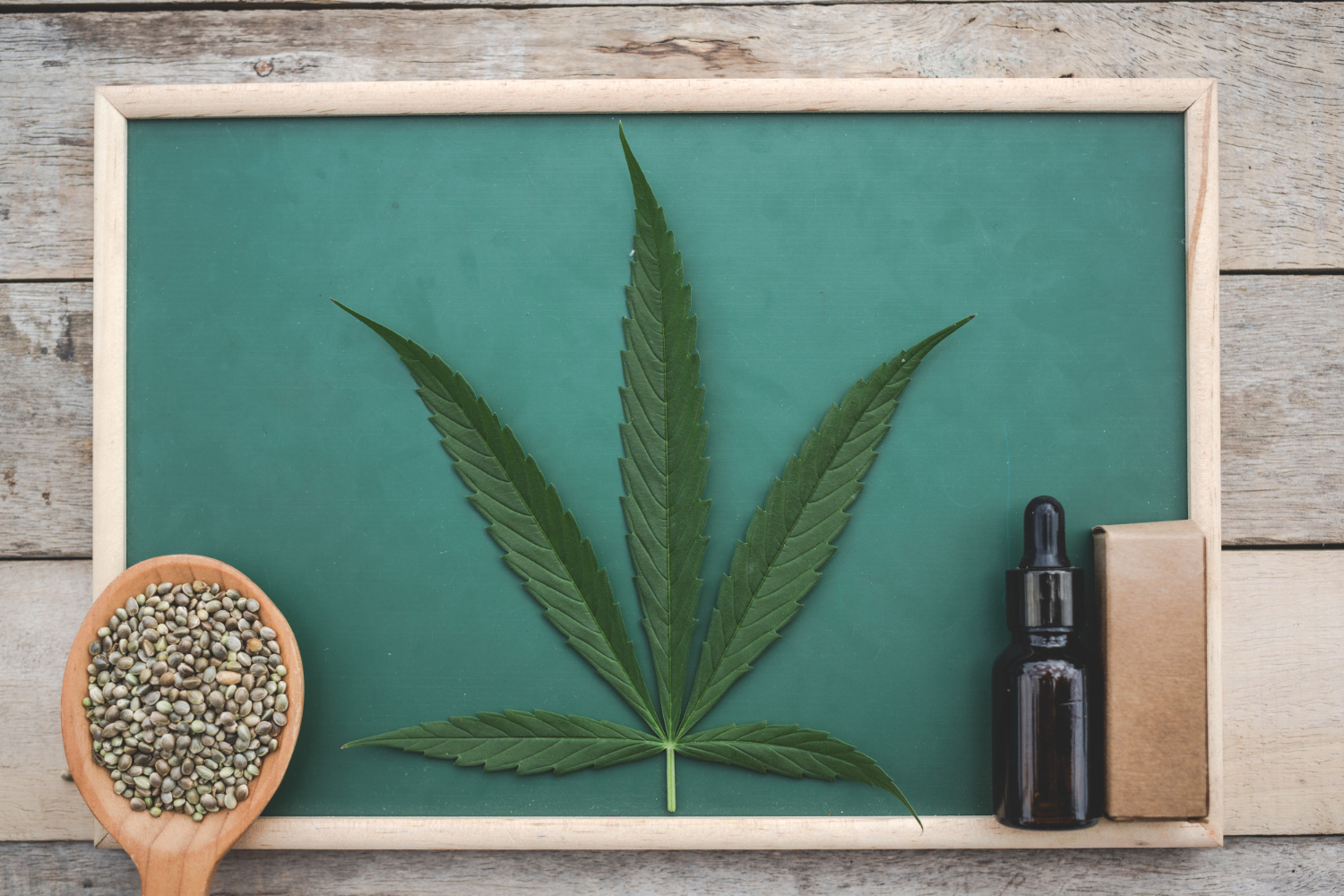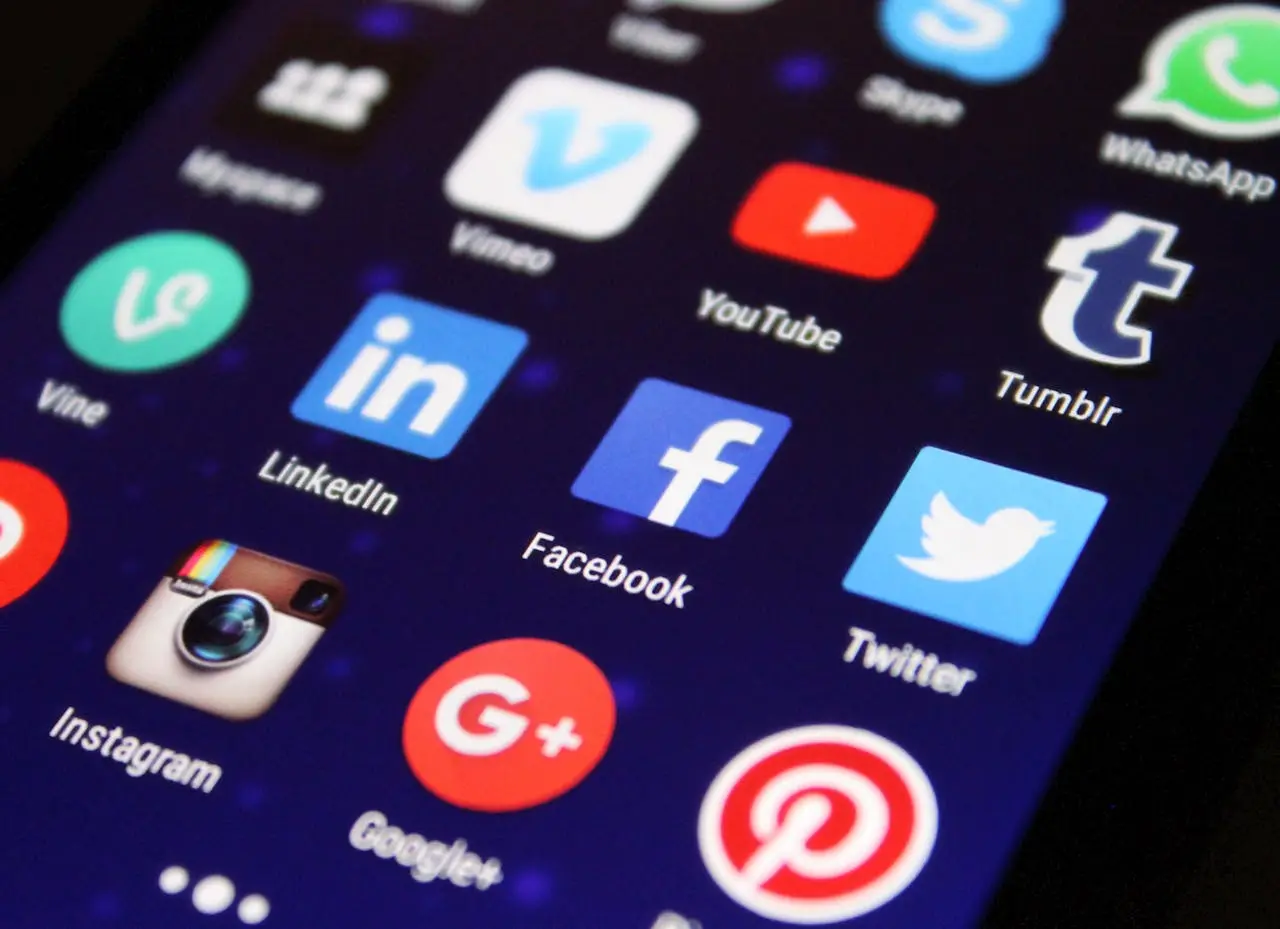In today’s rapidly evolving digital landscape, understanding social media usage is more critical than ever. With numerous platforms vying for attention, marketers and businesses need accurate data to refine their strategies, target the right audiences, and maximize their ROI. This is where social media management services come into play—helping brands navigate complexity, optimize performance, and stay ahead of trends. But how do you make sense of the constant shifts in user behavior and platform preferences?
Delving into the latest social media users statistics by platform offers invaluable insights. From the dominance of established giants to the rise of niche communities, these figures paint a comprehensive picture of the social media ecosystem. By examining these trends, businesses can identify opportunities, adapt their content strategies, and connect with their audience in meaningful ways. Let’s explore the key stats and trends shaping the social media landscape today.
How AI is Reshaping Social Media Marketing: Automation, Personalization, and Content Creation
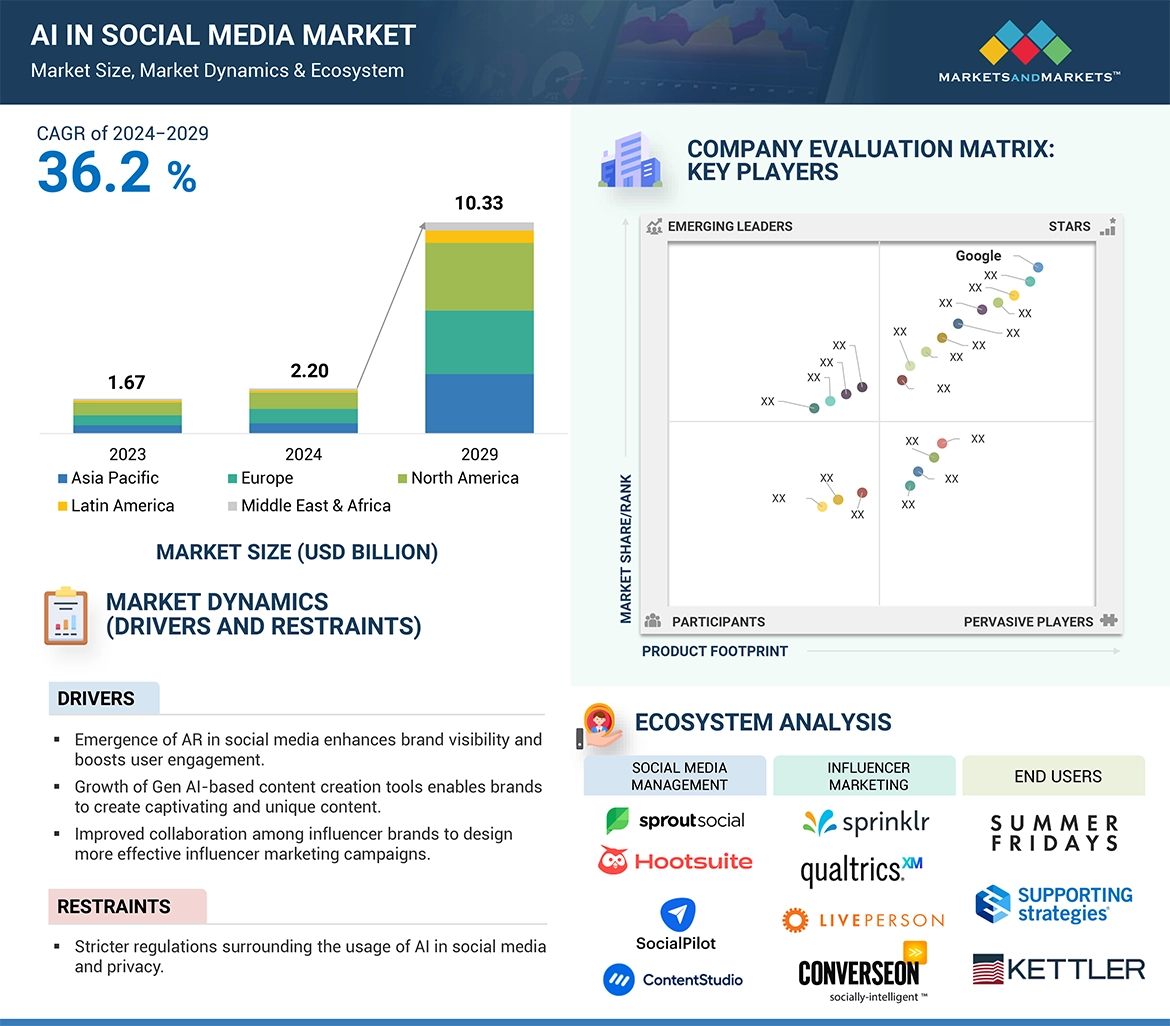
Source: Marketsandmarkets
The integration of AI in social media marketing is no longer just an innovative trend—it’s becoming a fundamental aspect of strategic campaigns. By automating repetitive tasks, generating diverse content, and delivering hyper-personalized experiences, AI is empowering marketers to achieve goals faster and more efficiently than ever before. As competition on social platforms intensifies, leveraging AI isn’t just an advantage; it’s now crucial for staying relevant and resonating with increasingly discerning audiences.
- Worldwide, 32% of marketers are utilizing AI for marketing automation in areas such as paid ads and personalized email campaigns. Source
- A notable 61.4% of marketers already rely on AI to streamline automated marketing processes. Source
- By the end of next year, 74% of marketers foresee AI automating over a quarter of their tasks. Source
- AI’s capability to analyze extensive datasets unveils patterns and insights that humans could easily overlook, driving smarter campaign strategies. Source
- AI is widely used to create blog posts (58%), social media posts (55%), and short articles (49%), addressing challenges like writer’s block and meeting tight deadlines. Source
- 85% of marketers believe AI enhances content quality, leading to more impactful messaging. Source
- 77% of marketers agree that AI contributes to creating more personalized content, making it highly engaging for target audiences. Source
- More than half of marketers are using AI to craft content for email campaigns, organic search, and social platforms. Source
Key Takeaway: AI is the Future of Customer-Centric Social Media Strategies
The advent of AI in social media marketing has fundamentally shifted how brands connect with their audience. By enabling highly personalized and efficient content strategies, marketers can amplify user engagement without compromising quality. Beyond just automation, AI offers the ability to humanize interactions at scale—whether through tailored ad experiences, dynamic storytelling, or predictive content recommendations. As consumer expectations continue to rise, marketers who embrace these technologies will not only meet these demands but also set the standard for innovation.
Pro Tip:
To maximize AI’s potential, focus on pairing automation with authenticity. Algorithms can accelerate production, but it’s the emotional resonance of your content—thoughtfully designed for human connection—that will foster long-term loyalty. Experiment with AI tools like Jasper, Grammarly, and ChatGPT, but always ensure a personal touch shines through.
Leveraging AI and Automation to Elevate Social Media Marketing
In the competitive landscape of digital marketing, efficiency and personalization have become the cornerstones of successful social media strategies. To meet these demands, marketers are turning to AI-powered automation tools to optimize campaigns, deliver hyper-relevant content, and streamline workflows. This trend reflects a shift from labor-intensive processes to smarter, data-driven strategies that not only save time but also enhance customer interaction.
- Approximately 32% of paid social media ads currently rely on automation to provide personalized consumer experiences. Source
- 29% of marketers plan to implement automation specifically for their paid social media campaigns in the near future. Source
- Currently, 60% of marketers are incorporating AI into their strategies, with 52% using it for content creation. Source, Source, Source
- 39% of marketers utilize AI tools for social media management, while 34% leverage it for chatbot functionalities. Source, Source, Source
- 35% of marketers are using AI-driven tools to create their own brand social media posts. Source
- AI is also a key tool for understanding customers better, with 25% of marketers employing it to refine audience insights. Source
- More than half of marketers plan to increase their investment in AI over the next year, underscoring its rising importance in achieving marketing goals. Source
- AI-powered chatbots are reshaping customer service by handling FAQs and assisting with purchase decisions in real time. Source
- An impressive 73% of consumers expect AI to enhance the quality of customer service and are eager to interact with it more frequently. Source
Key Takeaway: AI Is Redefining Social Media Success
The data reveals a clear trend: automation and AI aren’t just enhancements to social media marketing—they’re becoming the backbone of scalable and impactful campaigns. By automating repetitive tasks like content scheduling, audience segmentation, and customer support, marketers can focus on strategy, creativity, and building authentic engagement. The adoption of AI also empowers brands to deep-dive into data, unlocking actionable audience insights that fuel hyper-targeted campaigns.
Pro Tip:
To maximize your results, start small by automating basic tasks such as social media posting or chatbot responses. Gradually expand to more advanced applications like predictive analytics for audience behavior or AI-driven creative tools to scale content production. The key is to balance automation with human oversight to maintain authenticity and meaningful connections with your audience.
Crafting Platform-Specific Social Media Content to Drive Engagement

Source: DataReport
The era of “one-size-fits-all” content is long gone, especially when it comes to social media. Each platform serves a unique audience with distinct preferences and content consumption behaviors. To truly capture attention and drive engagement, marketers need to embrace platform-specific strategies that align with user expectations, while keeping the format fresh and relevant. This strategy isn’t just about avoiding repetition; it’s about creating value at every touchpoint.
- A remarkable 94% of B2B marketers rely on short articles or posts as their go-to tactic to boost engagement, with videos and case studies ranking next in their arsenal. Source
- Regularly updating and customizing content for individual platforms is critical for maintaining relevance. Cross-posting the same material across channels without adjustments often results in diminished impact. Source
An audience-centric approach to content, particularly one that emphasizes brevity and customization by platform, is proving to be a game-changer for marketers. It signals that your brand not only values but actively caters to the preferences of its followers, creating stronger connections and building trust.
Pro Tip:
Pay attention to what works best on each channel. For example, LinkedIn audiences may lean toward educational content or case studies, while Instagram thrives on visually engaging stories or reels. Analyze your performance metrics regularly and double down on the formats and topics that generate the most interaction for each platform.
Sales Potential of Video Marketing
In a content-saturated social media environment, video marketing has emerged as a non-negotiable powerhouse for brands aiming to stand out and drive measurable results. Why? Videos communicate faster, evoke stronger emotions, and hold attention longer than any other format—making them an invaluable tool for converting casual viewers into loyal customers. When executed strategically, video doesn’t just enhance engagement; it accelerates your path to revenue.
- A remarkable 87% of marketers have witnessed a direct increase in sales from their video marketing campaigns. Source
The takeaway here isn’t just about producing videos—it’s about strategically aligning your video content with your sales goals. From showcasing product value through explainer videos to using testimonials for social proof, every video you create should intentionally support your customer’s decision-making process.
Pro Tip:
To fully capitalize on video’s potential, invest in understanding your audience’s preferences. Experiment with formats like tutorials, user-generated content, or even behind-the-scenes clips to connect authentically. Use analytics platforms to track engagement, drop-off rates, and conversion sources, refining your video strategy for maximum impact over time.
Impact of AI on Conversational Marketing
In an era where customer experiences define brand loyalty, conversational marketing powered by AI is emerging as a game-changer. By leveraging AI-driven chatbots, businesses are not only streamlining communication but also creating hyper-personalized interactions that resonate with modern consumers. The shift toward conversational tools reflects a deeper trend: customers now expect instant, contextually relevant responses, and AI is stepping up to meet these demands efficiently.
- The global chatbot market, valued at $5.4 billion in 2023, is poised to reach $15.5 billion by 2028, reflecting a skyrocketing demand for AI-enabled conversational tools. Source
- As conversational marketing evolves, AI is predicted to facilitate a significant share of brand-customer interactions, elevating personalization and response speed. Source
The rapid adoption of AI-powered conversational tools signals a pivotal shift in how businesses approach customer engagement. Chatbots and virtual assistants are no longer “nice-to-have” features—they’re essential for scaling personalized communication across channels.
Pro Tip:
To get the most out of AI-driven conversational marketing, integrate chatbots with your CRM to ensure seamless customer journeys. Additionally, analyze chatbot interactions regularly to uncover opportunities for optimization and deeper personalization. This not only enhances customer satisfaction but also drives measurable business outcomes like higher retention rates and increased lifetime value.
Power of Inclusive Social Media Marketing
Social media is no longer just a platform for sharing updates; it has become a cultural mirror, reflecting the values and priorities of society. Consumers today are more discerning and demand authentic representation from the brands they engage with. Brands that champion diversity, equity, and inclusion (DEI) not only stay culturally relevant but also build a loyal customer base and positively influence purchasing behavior.
- 75% of consumers say inclusion and diversity directly affect their purchasing decisions, proving that DEI plays a pivotal role in shaping brand perception and customer loyalty. Source
- Almost half (46%) of marketers acknowledge that prioritizing DEI in social media helps maintain cultural relevance, underlining the importance of understanding and respecting diverse audiences. Source, Source
Inclusive marketing isn’t just a nice-to-have; it’s a necessity in a world where consumers expect brands to echo their values.
Key Takeaway: Empower Your Brand With DEI
The impact of diversity and inclusion in social media marketing goes beyond checking a box—it fosters trust, builds meaningful connections, and strengthens brand loyalty. By weaving DEI into your content strategy, you’re not just reaching a broader audience—you’re showing your customers that their values matter to you. From language that resonates across cultures to visuals that reflect real-world diversity, every detail contributes to making your brand truly inclusive.
Pro Tip:
Audit your social media content regularly to identify gaps in representation. Use insights from analytics tools and social listening platforms to understand how inclusive your messaging is perceived by your audience. Collaborate with diverse creators or consultants to ensure authenticity in your efforts. Partnering with experts in digital marketing strategies for small businesses can also help you craft campaigns that resonate with diverse audiences while aligning with your business goals.
The Expanding Content Marketing Landscape: Key Trends and Insights
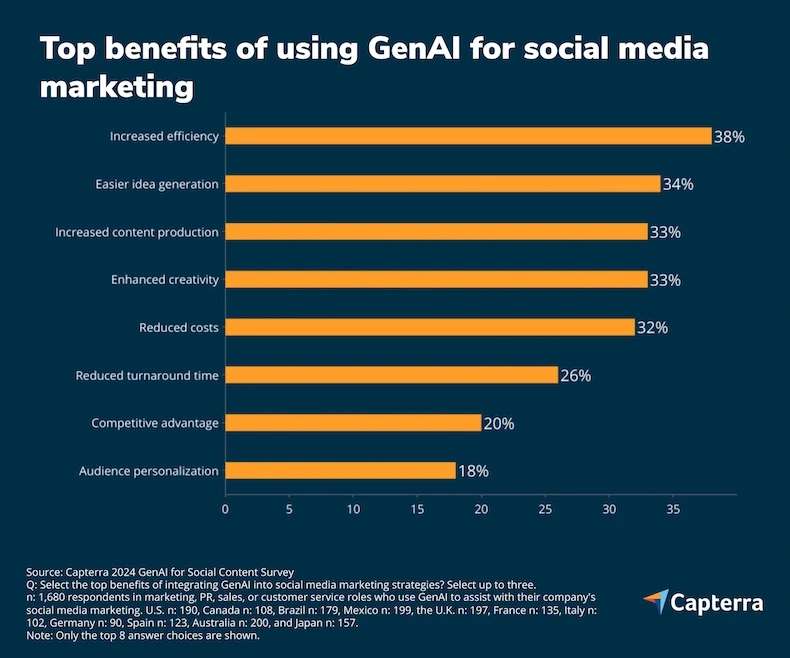
Source: Capetrra
Content marketing continues to prove itself as a cornerstone of modern business strategies, evolving beyond basic promotional efforts to become a vital growth driver across industries. With the rapid adoption of advanced technologies such as AI and the shift toward digital-first consumer behaviors, businesses are investing heavily in high-quality content to capture and retain audience attention. This thriving landscape highlights not just the ongoing demand for content but also the need for brands to innovate and adapt.
- The content marketing industry is on track to hit a staggering $600 billion valuation by 2024. Source
- With a compound annual growth rate (CAGR) of 13.7%, technological advancements, especially in AI, are fueling the industry’s expansion. Source
- The APAC region is expected to contribute 41% of the market growth in 2024, bolstered by increasing mobile usage and internet penetration. Source, Source, Source
- Over half of businesses plan to increase their content marketing budgets in 2024, as competitive pressure and economic challenges push brands to refine their strategies. Source
- As generative AI grows in popularity, marketers are doubling down on creating human-centric, authentic content to differentiate themselves. Source
- Blogs remain a top tool for engagement, with 90% of marketers relying on them to inform and retain audiences. Source
- Informative blog content plays a key role in building trust and encouraging repeat visits to sites. Source
- Short-form content (e.g., articles and posts) leads for B2B marketers, with 94% prioritizing it, followed by videos and case studies to engage audiences. Source
- Despite its effectiveness, 49% of marketers struggle to scale production and often miss opportunities to repurpose content efficiently. Source
Key Takeaway: The Future Belongs to Adaptable and Authentic Strategies
As the content marketing industry continues its meteoric rise, businesses must balance technological innovation with authenticity to keep up. The growing prevalence of AI means creating high-quality, relatable content is no longer optional—it’s mandatory. Emerging markets like APAC offer fertile ground for growth, making it crucial for companies to localize strategies for diverse audiences. Meanwhile, the focus on versatile formats like short articles, videos, and case studies ensures that brands can meet the ever-changing consumption preferences of their target audiences.
Pro Tip:
To stay ahead in this competitive landscape, invest in a content repurposing strategy. By breathing new life into existing assets—like turning a blog post into a video or infographic—you can extend their shelf life, maximize ROI, and keep your audience engaged across platforms. Advanced tools like Semrush or CoSchedule can simplify this process, ensuring you get the most out of your content creation efforts.
Efficiency with Content Scheduling and Repurposing
In the fast-paced world of digital marketing, efficiency is the name of the game. Content creation can be time-intensive, but strategic scheduling and repurposing provide a way to maintain momentum without burning out resources. By turning existing content into a multi-use asset and planning ahead, marketers can extend their reach, stay consistent, and make smarter use of their budgets. Here’s what the data tells us about why these strategies are essential for success:
- 43% of marketers publish content multiple times a week, highlighting the importance of maintaining a frequent posting schedule for audience retention. Posting at least once a week is seen as the baseline for staying relevant. Source
- 46% of content marketers schedule their posts two weeks to a month in advance, allowing them to proactively manage resources and handle last-minute changes with ease. Source
- Nearly 90% of marketers agree that repurposing older content is a more efficient use of time compared to creating entirely new assets. Source
- Repurposed and republished content can perform on par with brand-new materials in driving organic traffic, while being significantly more cost-effective. Source
Key Takeaway: Shift from Volume to Value
Strategic content scheduling and repurposing are no longer just “nice-to-haves”—they’re game-changers in optimizing your marketing efforts. In a crowded content landscape, consistency matters, but so does working smarter. By leveraging tools like editorial calendars and content management platforms, you can plan ahead, repurpose high-performing materials, and reduce the pressure of constantly reinventing the wheel. The result? A steady flow of content that engages your audience while giving your team the breathing room to focus on innovation and strategy.
Pro Tip:
Rethink “repurposing” as “reinventing value.” Turn blogs into podcast episodes, transform webinar highlights into digestible social media posts, or convert case studies into infographics. This not only maximizes your investment in original content but also ensures you’re meeting your audience where they are. Tools like Trello, Airtable, and CoSchedule can make scheduling and tracking these efforts a breeze.
Social Media in B2B Engagement
Social media has evolved far beyond a space for casual interactions—it’s now a critical touchpoint for businesses, particularly in the B2B arena. With professionals increasingly relying on these platforms for networking, research, and thought leadership, the opportunity for brands to connect, inform, and influence decision-makers has never been greater. Understanding key social media usage trends can help businesses craft strategies that not only capture attention but also drive meaningful engagement and ROI.
- Individuals spend an average of 145 minutes per day on social media platforms. Source
- A staggering 97% of B2B companies actively maintain a social media presence. Source
- Digital advertising has the power to boost brand awareness by up to 80%. Source
Key Takeaway: Social Media as a Cornerstone of B2B Marketing
The data underscores just how integral social media has become—not only in our personal lives but as a foundational element of B2B marketing strategies. It’s not just about having a presence anymore; it’s about leveraging the platform to become part of your audience’s daily routine. Whether through thought-provoking posts, interactive live sessions, or carefully targeted ads, brands must aim to actively contribute value, foster connections, and build trust.
Pro Tip:
Want to stand out? Experiment with emerging trends like virtual events, AI-driven personalization, and LinkedIn thought leadership campaigns. These tactics complement traditional content strategies while positioning your brand as an industry innovator.
How Augmented Reality (AR) is Revolutionizing Social Media Marketing
Augmented reality (AR) has evolved from a futuristic novelty into a groundbreaking tool that’s reshaping how brands engage with consumers. By blending the physical and digital worlds, AR offers immersive, interactive experiences that not only capture attention but also influence buying decisions. For marketers, this isn’t just a chance to get creative—it’s an opportunity to meet consumers’ expectations for convenience, personalization, and innovation. The numbers below reveal the growing influence of AR and its untapped potential for social media marketers.
- The global AR market is expected to skyrocket to $198 billion by 2025, driven largely by its adoption in mobile marketing. Source
- By overlaying digital content—like videos, images, or sounds—onto the real world via smartphones or AR glasses, AR enhances the way consumers interact with products. Source
- Brands can leverage AR in innovative ways, such as virtual try-ons, interactive product demonstrations, or virtual home décor previews—all of which boost engagement and drive sales. Source
Key Takeaway: AR is the Future of Social Media Experiences
As social media continues to evolve from a discovery platform to an interactive marketplace, AR has positioned itself as the next frontier in consumer engagement. Today’s consumers crave more than static images or videos; they want to interact with products, visualize their choices, and make more informed decisions—and AR delivers on all fronts. Brands that adopt AR early not only differentiate themselves but also establish deeper connections with their audiences by offering unique, value-driven experiences.
Integrating AR into your social media strategy is just one way to elevate your digital marketing efforts. To ensure your broader strategy is cohesive and effective, consider exploring full-service marketing solutions. These services can help you seamlessly align AR with other digital marketing channels for maximum impact.
Pro Tip:
To integrate AR into your marketing strategy seamlessly, focus on relevance and usability. Start small with engaging AR filters on Instagram or Snapchat, or collaborate with AR platforms to create virtual product trials. And remember, user education is critical—guide users on how to access and make the most of your AR features to maximize its potential impact.
Conclusion
The evolution of social media marketing, fueled by AI, automation, and innovative content strategies, has created a dynamic landscape where brands can connect with audiences more effectively than ever before. From AI-driven personalization that delivers tailored content based on user preferences to the rising importance of video and augmented reality, the possibilities for engagement are vast and continuously expanding. The statistics shared throughout this article underscore the undeniable impact of these trends—whether it’s the 87% of marketers seeing sales growth from video marketing or the 71% of consumers who prefer AR-enhanced shopping experiences.
To stay competitive, businesses must not only embrace these tools but also refine their strategies to align with shifting consumer expectations. The key to success lies in balancing automation with authenticity, leveraging data-driven insights, and creating meaningful interactions that resonate with diverse audiences across platforms.
If you’re ready to supercharge your business, don’t hesitate to get in touch with our full-service digital marketing pros for a free quote. Let us help you navigate this ever-evolving digital landscape and create strategies that drive measurable results.
About Social Media Users Statistics By Platform Trends and Insights
This guide was written by the Scopic Studios team and reviewed by Araksya Hakobjanyan, SEO Lead at Scopic Studios.
Scopic Studios delivers exceptional and engaging content rooted in our expertise across marketing and creative services. Our team of talented writers and digital experts excel in transforming intricate concepts into captivating narratives tailored for diverse industries. We’re passionate about crafting content that not only resonates but also drives value across all digital platforms.
Note: This feature blog’s image are sourced from Freepik.























































